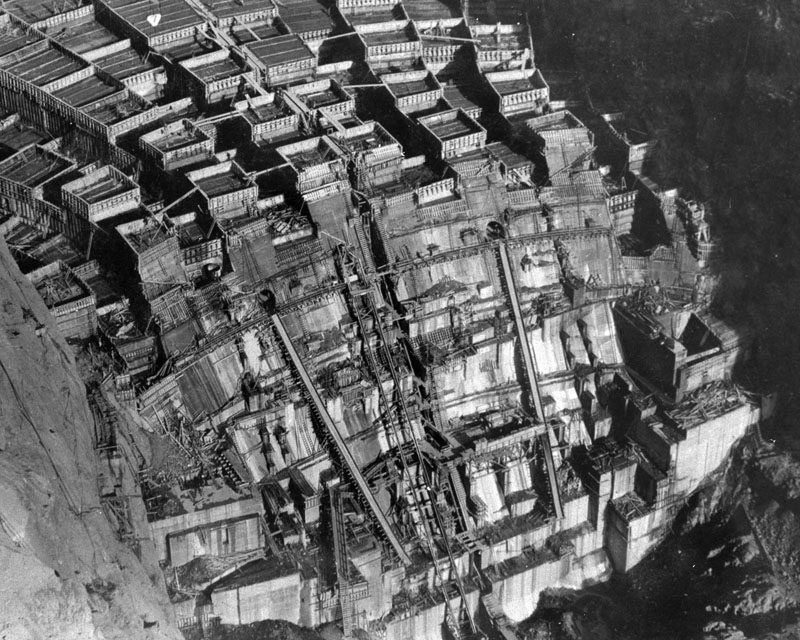The Hoover Dam
Bechtel, Crowe, Kaiser, Khan and Shea 1936 (completed)
Weighing more than six and a half million tons, the Hoover Dam was a massive project by the standards of any generation. The dam was built by over five thousand workers as a series of vertical columns of huge blocks, of which there are just over 200. The amount of concrete placed in in any one block was limited to five feet in a 72 hour period. Adjacent columns were then locked together with a series of vertical and horizontal keys. Once the concrete had cooled, a cement and water mixture was forced into the spaces between the columns, forming a single monolithic structure.

In the face of severe political, technical, organisational and economic problems resulting in large part from the Great Depression, the project was completed two years ahead of schedule and under budget. The project team employed several groundbreaking project management techniques, including the use of the Gantt Chart.
The project management team consisted of just four men: S.D. Bechtel, Henry J. Kaiser (of whom more later), Felix Khan and Charles A. Shea. In addition Frank Crowe (a.k.a. "Hurry Up"), who worked for Shea, acted as the primary supervisor of the operations personnel. It was ultimately Shea's responsibility to ensure that the project came in on time and on budget.
